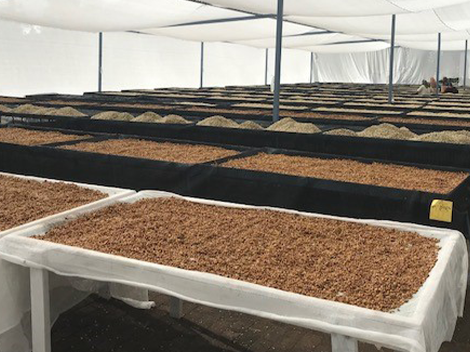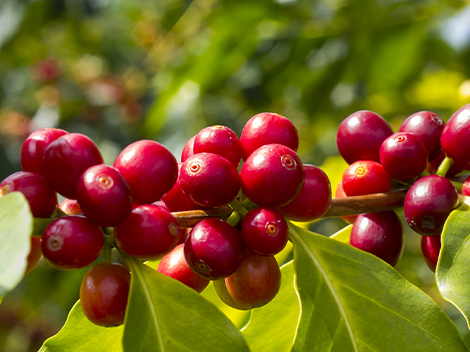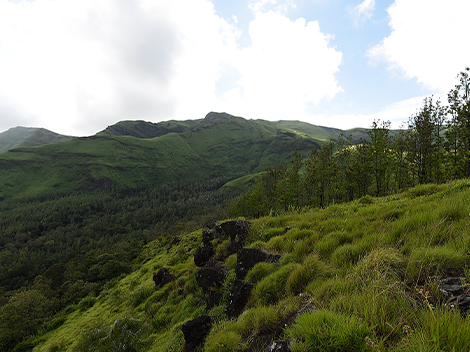Also of Interest
India AA Natural - Monsoon Malabar
About This Coffee


History of Coffee in India
If coffee was born in Ethiopia and grew up in Yemen, then it left home to make its own way in the world through India in the 17th Century, when Baba Budan, returning from a pilgrimage to Mecca, smuggled seven beans and planted them in hills of the Chikkamagaluru district, a hill region now known as Baba Budan Giri. Green coffee cultivation grew slowly in India and the first formal plantations were established by the British in 1840 in the same region where the first coffee was planted.
Growing Coffee in India
Over the years, repeated battles with leaf rust and an emphasis on yield caused India to increase planting Robusta and prioritize shade growing conditions. Today, India grows more than twice as much Robusta as Arabica and nearly all coffee is grown under shade, much of it in forest conditions. Over 21% of India’s coffee is exported to Italy, where Robusta has long been a part of traditional espresso blends. In recent years, Olam has been finding coffee for the specialty market. India is poised to attract increasing attention from specialty markets, and not only because quality is quickly improving. Coffee plantations in India are home to abundant wildlife, including tigers and elephants, because of the forest-like conditions. Compared to shade grown coffee in other parts of the world, coffee in India is grown in dense shade conditions, and almost intercropped with peppercorn, cardamom, areca nut, oranges, bananas, and other crops. By law, those who work on coffee farms must be paid minimum wage. Though the system for determining this wage in different sectors is complex, coffee workers in India tend to make more than the world-wide average. They also receive child care, maternity leave, free housing, and pensions.


- Farm Name Monsoon Malabar
- Producer Type Single Estate
- Processing Natural/Dry Processed
- Bag Type Grain Pro / Ecotact
- Plant Species Arabica
- On Sale No
- Top Lot No
- Status Spot
- Coffee Grade IND CA NAT MON MAL AA
- CTRM Contract Number P607952-1
- Country of Origin India
- Warehouse The Annex






